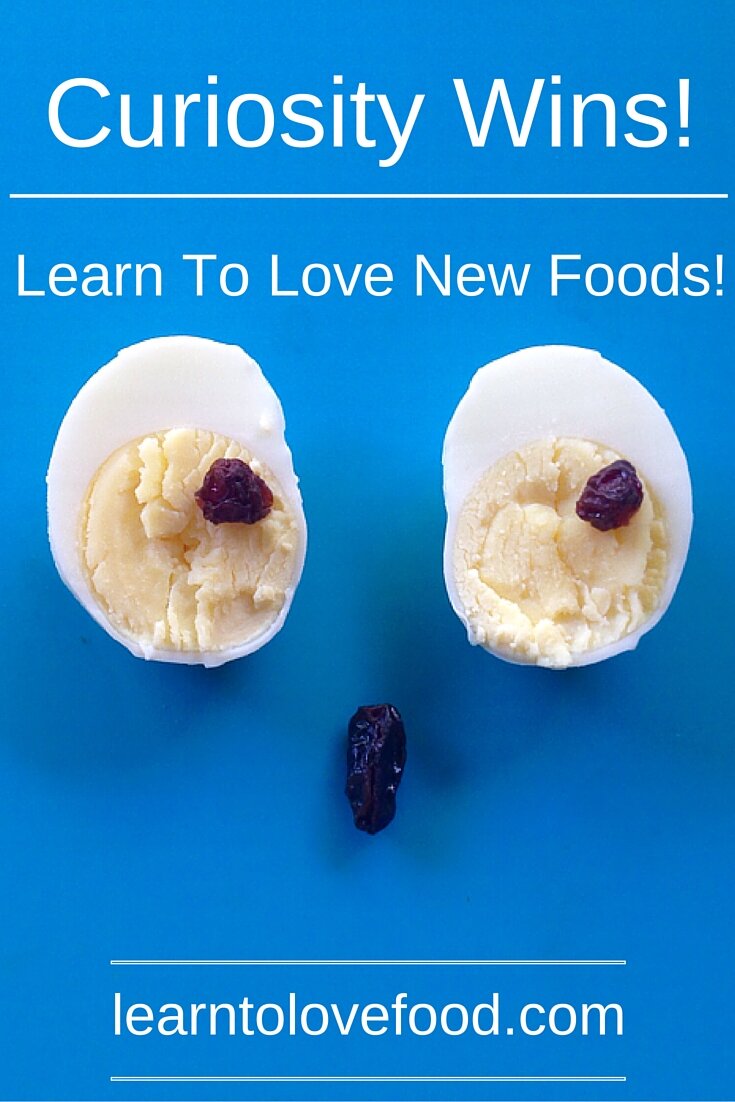Curiosity Wins!
 Curiosity is the opposite of fear. When we're fearful we shut down to new information. When we're curious, we open to it. There are lots of reasons kids become scared of foods or develop a food aversion. Often it's because they got sick after eating a food, or even after just smelling it. The sickness could have had nothing to do with a food (or maybe it did) but our brains still make the connection that the food is associated with the sickness and the food isn't safe. This is a hard-wired part of our primitive brain that helps to keep us from eating unsafe food in the future.For most of us this means there are certain random foods that make us feel ill when we smell them and we have no desire to eat or even try them(for me it's apple pie!). For kids who have a medical history that's affected their eating, the list could be a lot longer than just one or two random foods. This link between food refusal and foods associated with feeling sick could be whittling their food repertoire down to just a few foods.In these cases (and most cases of food refusal, really), begging, cajoling and bargaining to get kids to try just one bite isn't going to teach them to eat those foods. It's going to teach them a lot of different behaviors to either get out of eating the food or to get a whole lot of attention for not eating. Which, you guessed it, continues the cycle!Curiosity is one way to help break the cycle! Get excited; get curious! What's in there? What does it feel like--on your fingers, on your lips, on your tongue? Work up the steps to eating and get comfortable exploring and discovering foods at each step!Also, check out the free resource library for worksheets to help determine your child's taste and texture preferences as well as the Animal Alphabet E-book, which can help get kids excited about foods and incorporate food learning into book time!Happy food play!
Curiosity is the opposite of fear. When we're fearful we shut down to new information. When we're curious, we open to it. There are lots of reasons kids become scared of foods or develop a food aversion. Often it's because they got sick after eating a food, or even after just smelling it. The sickness could have had nothing to do with a food (or maybe it did) but our brains still make the connection that the food is associated with the sickness and the food isn't safe. This is a hard-wired part of our primitive brain that helps to keep us from eating unsafe food in the future.For most of us this means there are certain random foods that make us feel ill when we smell them and we have no desire to eat or even try them(for me it's apple pie!). For kids who have a medical history that's affected their eating, the list could be a lot longer than just one or two random foods. This link between food refusal and foods associated with feeling sick could be whittling their food repertoire down to just a few foods.In these cases (and most cases of food refusal, really), begging, cajoling and bargaining to get kids to try just one bite isn't going to teach them to eat those foods. It's going to teach them a lot of different behaviors to either get out of eating the food or to get a whole lot of attention for not eating. Which, you guessed it, continues the cycle!Curiosity is one way to help break the cycle! Get excited; get curious! What's in there? What does it feel like--on your fingers, on your lips, on your tongue? Work up the steps to eating and get comfortable exploring and discovering foods at each step!Also, check out the free resource library for worksheets to help determine your child's taste and texture preferences as well as the Animal Alphabet E-book, which can help get kids excited about foods and incorporate food learning into book time!Happy food play!
